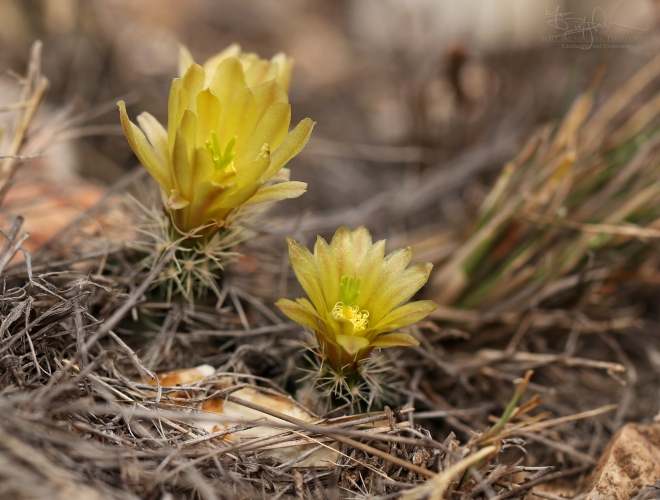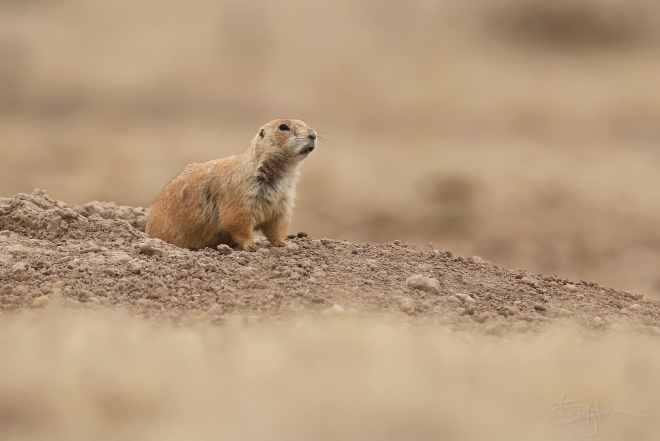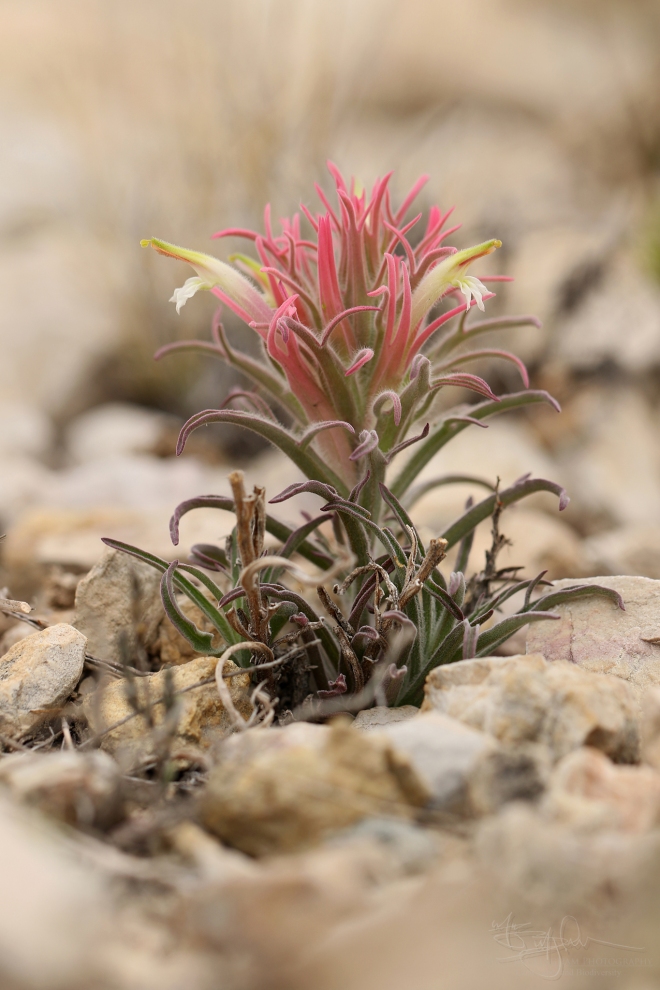
An hour or so north of Big Bend National Park, nestled between the Stockton Plateau and the Eastern Front Ranges of the Trans-Pecos lies a unique geoecological area with floral and faunal associations that seem out of place in the otherwise semi-arid desert scrub that surrounds it. The Marathon Basin, at is is commonly described, is surrounded by a series northeast trending ridges known as the Marathon Uplift, which contains a unique geology important to a suite of endemic, endangered species.
The Basin’s most dramatic feature just might be a vast remnant patch of short grass prairie that appears like a vast sea of refuge from the surrounding desert scrub. I always look forward to seeing this prairie and its residents. This spring we were fortunate to see a group of Pronghorn (Antilocapra americana) among the undulating grassy ridges.

Pronghorn Buck
The star attraction of the Marathon Grasslands, however, is the massive prairie dog town. Here a thriving colony of Black-tailed Prairie Dogs (Cynomys ludovicianus) entertains visitors to their prairie realm with their inquisitive nature, comical antics, and high-pitched alarm calls.

Black-tailed Prairie Dog
South of the town of Marathon exist a series of ridges with conspicuous exposed layers of multi-colored rock known as Caballos Novaculite. Primarily composed of chert, this formation is the same as the Novaculite outcrops in the Ouachita Mountains of Oklahoma and Arkansas, located hundreds of miles to the east, and both exposures originated from a collision of the land masses Gondwana and Laurentia in the Late Paleozoic. The quartz present in the Caballos makes the rocks extremely hard and often sharp.

Caballos Novaculite Outcrops
The Caballos Novaculite is home to three species of endemic cacti, all of which are entirely confined to this small portion of Brewster County. Two of these species, Nellie’s Cory Cactus (Escobaria minima) and Davis Hedgehog Cactus (Echinocereus davisii) are Federally Endangered. Both species have suffered heavily from over collection and as a result are now entirely confined to private land.
We were fortunate enough to observe several Echinocereus davisii plants in bloom. This is one of the smallest cactus species in the world, rarely reaching heights greater than an in and a half. They are almost entirely hidden beneath grasses and other vegetation growing among the Novaculite, rendering them practically invisible. Only when the small yellow-green flowers emerge in early Spring to they become visible.

Davis Hedgehog Cactus
The Marathon Basin and Uplift are bordered to the northwest by the Glass Mountains. The lower slopes of this range are dominated by typical Chihuahuan Desert Scrub, where we observed a number of interesting plants in bloom, including Woolly Locoweed (Astragalus mollissimus), Feathery Dalea (Dalea formosa), and Downy Paintbrush (Castilleja sessiliflora).

Woolly Locoweed

Feathery Dalea

Downy Paintbrush

Downy Paintbrush
In my humble opinion, no trip to the Big Bend Region is complete without a stop in the Marathon Basin. It serves as a reminder of the staggering diversity of the Trans-Pecos, and a humbling exposure to the wide open spaces that West Texas is famous for.
